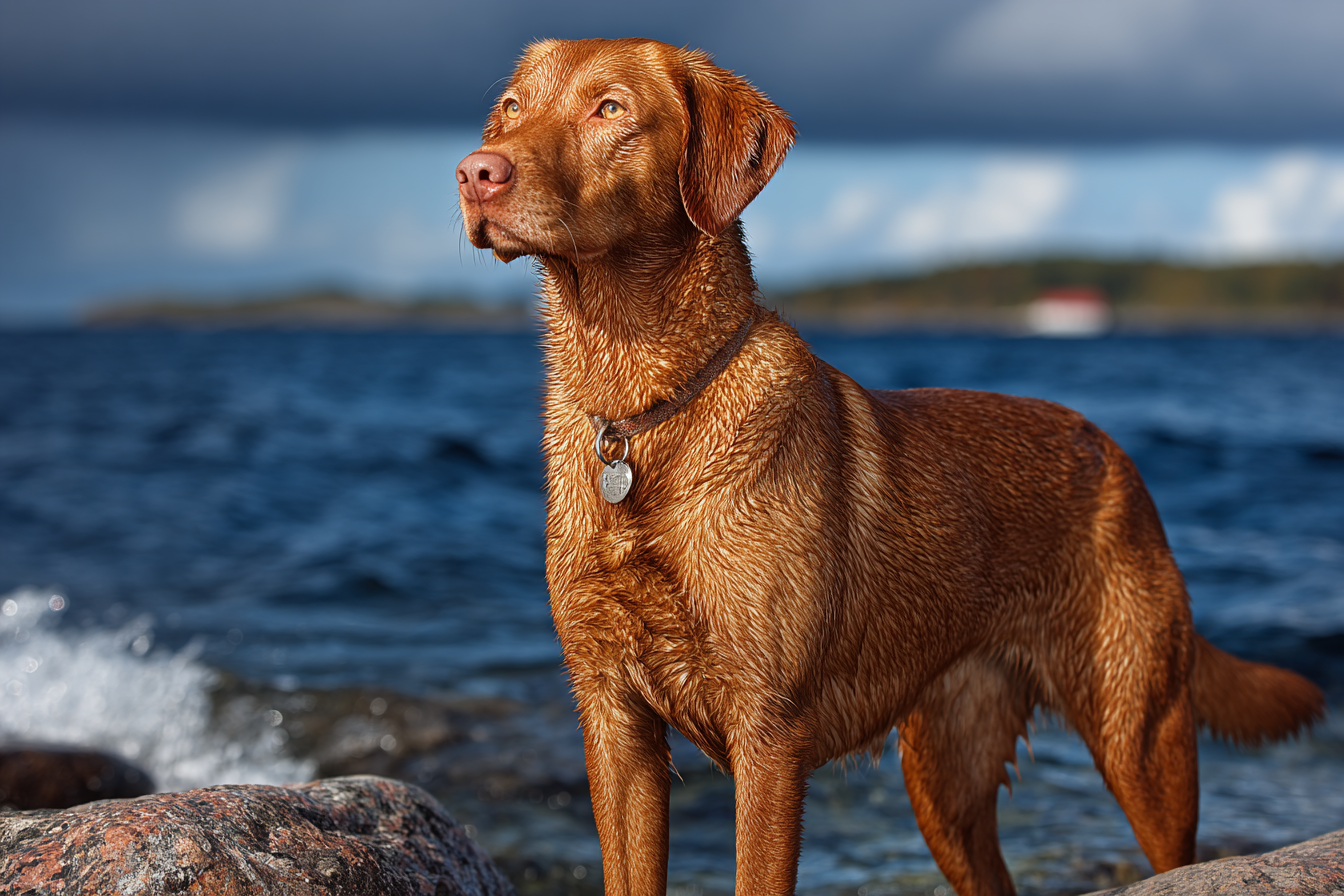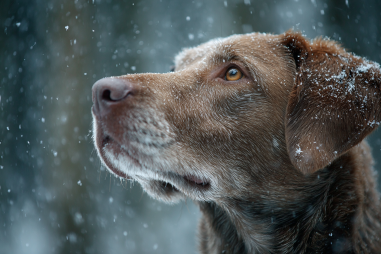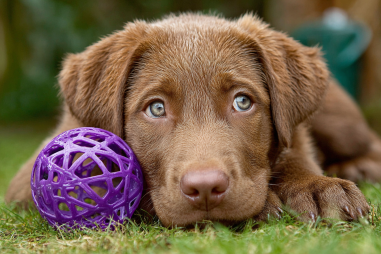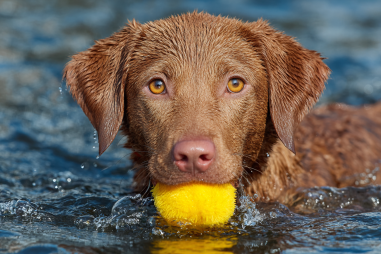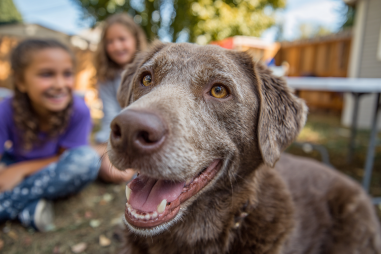The Chesapeake Bay Retriever, often affectionately called the “Chessie,” is a breed that stands out for its unique combination of intelligence, loyalty, and rugged good looks. Known for their versatility both in the field and at home, these dogs have captured the hearts of many as devoted companions and hardworking partners. If you’re considering adding a Chesapeake Bay Retriever to your family or simply want to learn more about this fascinating breed, understanding their distinctive characteristics is a great place to start.
Physical Characteristics: Size, Coat, Color
The Chesapeake Bay Retriever is a sturdy, medium-to-large sized dog that exhibits both power and agility. Adult males typically weigh between 65 to 80 pounds, while females usually range from 55 to 70 pounds. They stand about 21 to 26 inches tall at the shoulder, giving them a confident and balanced build suitable for various activities, especially waterfowl retrieval.
One of the most notable physical traits of the Chesapeake Bay Retriever is its thick, dense coat. Their double coat consists of a short, dense undercoat that provides insulation and a longer, waterproof outer coat that protects them from cold and harsh weather. This distinctive coat helps them excel in water-based tasks, especially since they originated to retrieve ducks in the chilly Chesapeake Bay area.
The breed’s coat colors are unique and range from shades of brown that include:
- Brown
- Sedge
- Deadgrass
These colors are often accompanied by lighter markings on the chest and toes. Their coat texture is often described as somewhat oily to the touch, which aids in shedding water quickly after swimming.
Temperament and Personality Traits
When it comes to temperament, Chesapeake Bay Retrievers are known for their intelligence, courage, and loyalty. They are extremely devoted to their families and tend to be protective without being aggressive. This makes them excellent watchdogs who are alert and responsive to new situations, yet friendly and approachable once they become familiar.
Chessies are also known for their independent streak. While eager to please, they are intelligent and can sometimes display a mind of their own. This adds a layer of complexity when training, requiring consistent and patient handling from their owners. They thrive on mental stimulation and enjoy challenges that make them think, such as interactive games or training exercises.
This breed is also very affectionate with their family members and generally good with children when socialized properly from a young age. However, because of their protective nature, early socialization is important to ensure they are comfortable around strangers and other pets.
Energy Levels and Exercise Needs
Chesapeake Bay Retrievers are high-energy dogs that require plenty of daily physical and mental exercise. They were bred to work hard as waterfowl retrievers, so they have stamina and endurance that many other breeds may lack. Activities that challenge both their bodies and minds keep them happy and prevent boredom-related behaviors.
Typical exercise recommendations include:
- At least an hour of vigorous activity daily
- Swimming, which they naturally excel at and adore
- Regular long walks or hikes
- Interactive play sessions, such as fetch or agility training
Without sufficient exercise, Chessies can become restless, leading to destructive behavior. Providing outlets for their energy is crucial, both for their physical health and their emotional well-being.
Suitability for Families and Lifestyles
The Chesapeake Bay Retriever is an excellent choice for active families or individuals who have the time and energy to engage with them daily. Because of their protection instinct and affinity for children, they can fit well into households with kids, especially when proper introduction and socialization are taken into account.
This breed is best suited for people who enjoy outdoor activities such as hiking, running, or water sports. Their love for swimming means homes with access to lakes or ponds can be ideal, or even a backyard where safe swimming opportunities exist. They can adapt to urban or suburban settings if their exercise requirements are adequately met, but they are less suited to small apartments without nearby parks or open areas.
If you lead a relatively sedentary lifestyle or work long hours away from home, this breed might not be the best fit. They thrive with companionship and tend to develop separation anxiety if left alone for long periods. A committed owner who can provide both physical activity and social interaction is key to their happiness.
Common Behavioral Tendencies
Understanding some of the Chesapeake Bay Retriever’s behavioral patterns can help prospective and current owners provide the right environment and training:
- Protectiveness: They are naturally protective of their home and family, which can be a positive trait but may require early socialization to prevent over-guarding or territorial behavior.
- Intelligence with independence: While smart and trainable, Chessies can sometimes be willful. Reward-based and consistent training methods work best with this breed.
- High prey drive: Their history as hunting dogs means they may have a strong instinct to chase small animals. Supervision and training can help manage this tendency.
- Affinity for water: Swimming is usually a favorite activity, and they may spend extensive time in water when possible.
- Chewing and digging: Without enough stimulation and exercise, they might develop destructive habits such as chewing furniture or digging up yards.
Proper training, socialization, and plenty of physical and mental outlets are essential to channel these behaviors positively.
Embracing the Chesapeake Bay Retriever’s Unique Qualities
The Chesapeake Bay Retriever is a remarkable breed with a rich history and a personality that can be both challenging and rewarding. Their distinctive coat, unwavering loyalty, and incredible work ethic make them stand out among retrievers and companion dogs alike. They thrive best in homes where their physical needs and mental stimulation are prioritized, and where they can become true family members.
For those willing to invest the time and effort into their care and training, a Chessie offers a lifelong bond filled with adventure, affection, and companionship. They are more than just a beautiful breed—they are stalwart friends ready to share in all the joys and activities life has to offer.

